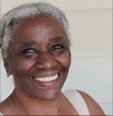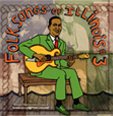PYSANKA
What will you pass along?
During WWII Vera Samycia’s mother fled Ukraine and eventually immigrated to the United States. One of the few possessions she brought was her kistka, the primary tool used to make Pysanka, or decorated Easter Eggs. The kistka supplies thin lines of hot wax which resist coloring and are then removed at the end of the dye process.
“My mom always did the eggs. She learned from her grandmother and some ladies in the village because her mother died very young. Mom always wanted me to learn, however, we were too busy… Then National Geographic did a story on the beauty of Ukrainian Easter Eggs*. For lot of us youngsters it dawned on us, wait a minute, if it is so important for National Geographic there must be something to it. And then some of us, we thought we should learn to do it… to preserve our identity.”
* Rober, Paul Jordan. “Easter Greetings from the Ukrainians.” National Geographic. V 141, n 4 (April 1972) pp 556-63
More information on this art form and artist can be found in our Teacher’s Guide.
Additional Resources
The Ukrainian National Museum of Chicago has exhibits, and archive, and many activities. For more information: http://www.ukrainiannationalmuseum.org//eng/index.html
A Celebration of American Family Folklore (1982), is a text that includes family stories collected at the Smithsonian Folklife Festival, as well as really useful and important “how to” sections on collecting family folklore. Although this book was first published in the early eighties, its usefulness is still very relevant in the classroom. Authors include Holly Baker, Amy Kotkin, and Steven Zeitlin.







